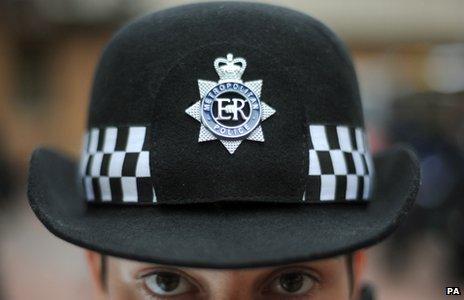Want crime trends? Just ask people
- Published
- comments

Now we know that the statistics watchdog doesn't trust the police recorded crime figures, what faith can we have that crime really has been falling for the past 20 years?
The answer is plenty.
The UK Statistics Authority has said that police recorded crime data in England and Wales should no longer be designated as National Statistics because of accumulating evidence that they may be unreliable.
Recorded crime figures have always been a lousy way to identify crime trends. They are really a measure of police activity, their priorities and the confidence of the public to report crime.
A big operation to tackle knife crime, for instance, may uncover and record many more offences involving knives. It does not mean knife crime is rising.
Once the knife crime operation is over, it is likely the number of knife offences recorded will reduce. That does not mean knife crime is falling.
If police put more emphasis on dealing with domestic violence or homophobia, for example, more victims may be encouraged to come forward.
That doesn't mean there is more of it. It just means police are identifying more of what is going on and recording it.
This is important to remember as we see a spike in recorded incidents of child abuse. There is no good evidence that such abuse is increasing but it is good news that more people are coming forward to report it.
Public confidence and enthusiasm to report crimes generally affects the data.
As with all recorded activity or performance data, there is always a risk of inaccuracy, confusion and fiddling.
Quite which crime category an offence fits into is not always straightforward. Judgment may be required to decide if a mobile phone snatch in the High Street is a "theft" or crosses the threshold to becoming a much more serious "robbery".
One can easily imagine how officers may respond if there is a lot of pressure to show the local force is getting to grips with robberies.
So how can we be confident about crime trends? Well, at a very local level it is hard but at a force or national level there is a much better way to measure what crime is really like.
Ask people.
Each year for more than 30 years, something like 40,000 people in England and Wales have been asked how crime has affected them in the previous 12 months.
The British Crime Survey (now the Crime Survey of England and Wales or CSEW) is a world-renowned invention. Using robust statistical modelling, it identifies far more crimes than are recorded by the police.
Because it is such a big survey and conducted so regularly, it gives a very accurate picture of people's experience of crime. And, critically, it shows up the trends in different crime types.
The survey is not perfect - people may be reluctant to reveal details of some intimate crimes and the quality of the results is dependent on the quality of the answers.
Until recently, crimes against children were not included in the survey. And, of course, it cannot get responses from murder victims.
But as a way of identifying broad crime trends, there is no better way than simply asking lots of people.
What the CSEW reveals is that the number of victims of both property crime and violent crime has halved since the mid-90s.
Some people find this hard to believe. The news is filled with crime stories feeding the impression that criminality is rising.
The evidence otherwise is very powerful. The downward trend since 1995 has been gradual but clear. There have been no surveys in the past 20 years that have produced a different story.
The fall in crime is real and important.
Politicians and planners need to act on the basis of the facts, rather than ill-informed anecdote or impression.
Citizens more generally must live their lives according to the real risks rather than misguided fears.
To lock oneself behind numerous security bolts and locks because of a mistaken belief that great danger lurks beyond is seriously damaging to people's quality of life.
So, for me, the downgrading of recorded crime figures from their previously elevated status of National Statistics is good and bad.
It is good because it recognises the weakness they have as a measure of crime and particularly crime trends. It may stop the unscrupulous from pulling some recorded police data out to make an argument unsupported by the evidence.
It is bad, though, if the effect is further to entrench the widespread and mistaken view that crime statistics are bogus and claims that we are a less dangerous society are too.
I believe that the evidence is clear. Crime in this country (and most other developed nations) has and, for the most part, is still falling.
Please do not let us miss the golden opportunity to understand why that is because of a few coppers massaging the daily log.
- Published18 October 2011